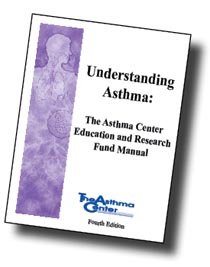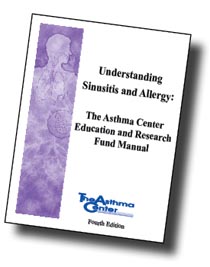Allergic conjunctivitis
Allergic conjunctivitis is a common allergic problem involving the conjunctiva of the eyes. More than 25% of the population suffers from common nose related allergy symptoms. At least half of these allergy sufferers have some symptoms of allergic conjunctivitis. On occasion allergic conjunctivitis can occur alone without nasal or sinus symptoms. It is most frequently associated with symptoms of itchy watery eyes often occurring during the allergy seasons. Repeatedly rubbing the eyes perpetuates the itchy feeling and creates a repetitive cycle of infection.
Seasonal allergic conjunctivitis is the most common allergic disease involving the eye. This condition affects you seasonally based upon changing concentrations of seasonal pollen. Symptoms can be severe and quite intolerable but not dangerous since they do not cause any permanent damage to the eye. The disease usually is self limiting with avoidance of the allergen. Seasonal allergic conjunctivitis occurs more frequently than perennial allergic conjunctivitis. Symptoms typically occur in spring and fall depending on your specific sensitivities and the time and extent of pollination.
Perennial allergic conjunctivitis typically results from exposure to dust mites, animal dander and/or mold or other allergens that are present year round in home or work environments. Because of constant exposure to these allergens, symptoms are year round and similar to the symptoms of the seasonal condition. However they may wax and wane depending on indoor allergen concentrations.
If you suffer from allergic conjunctivitis, you may develop dark discoloration or circles below your eyes often called “allergic shiners.” You may complain of fullness in your eyes or perhaps a burning sensation. The eyes often tear and may become swollen or even swell shut in severe cases. Your eyes may be red or not even look that bad even though the itching is quite severe. You may complain of intolerance to bright lights (photophobia) or occasionally have blurred vision. When symptoms are severe, the need to rub your eyes may become overwhelming because of the intense itching.
Diagnosis
Diagnosis of allergic conjunctivitis is based on presentation of typical allergic symptoms in the nose and eyes. Symptoms usually affect both eyes. Most of the time symptoms are clearly linked to pollen, work, or home allergen exposures. Walking into a house and suddenly experiencing itchy eyes when exposed to a pet makes the diagnosis obvious. However year round symptoms that increase and decrease without a clear cause can make the diagnosis of allergic conjunctivitis quite difficult, especially if it is complicated by other concurrent medical problems such as dry eyes or other eye disease.
Because you may know what tends to affect you, you may be able to specifically identify the offending allergen(s). Allergy skin tests should support the diagnosis. These tests can also assist in designing environmental controls and in formulating an allergy serum if allergy injection therapy is necessary.
Nonallergic conditions need to be considered and ruled out before final diagnosis of allergic conjunctivitis is made. Among these considerations are:
- Dry eyes which can cause red itch or burning sensation in the eye as if there is a foreign particle present (and watery eyes as overcompensation for dryness)
- Presence of a foreign body/particle
- Overuse of eye medications (topical decongestants used to “get the red out”) can cause red, irritated eyes even after all allergic or other symptoms have resolved; in this case, the treatment actually causes the disease
- Cosmetic or other contact allergy of the eyelids
- Contact lens related problems
- Medication induced conjunctivitis
- Work environment and hobbies - nonspecific air pollution from work or hobbies can cause irritated, red, watery, burning, or stinging eyes
- Atopic dermatitis
- Eye or Eyelid Infections: Eye infections may be difficult to exclude early in the development of eye symptoms since they may be similar to that of allergy. Eye infections usually begin in one eye at a time, while allergy usually affects both eyes at the same time. The discharge from an infected eye may begin as clear but often becomes cloudy or discolored with time. In contrast allergic conjunctivitis is always associated with a clear discharge. Eye infections may be associated with swelling or tenderness of the small lymph nodes in front of the ear while this is not observed in allergic conjunctivitis.
Common Types and Symptoms of Allergic Conjunctivitis
| Allergic | Viral | Bacterial | |
| Primary Complaints | Itching, often severe | Burning, irritation, discomfort |
Irritation |
| Tearing | Moderate | Profuse | Moderate |
| Discharge | Minimal, pinkish or milky | Minimal | Profuse, whitish purulent |
| Redness | Generalized | Generalized | Generalized |
| Other Findings | Nasal and/or chest symptoms | Occasional sore throat and fever | Occasional lid swelling |
Treatment
Itching and tearing may cause you great distress, interfering with your ability to read, concentrate, work, attend school, or even sleep. If you experience these problems, the following treatments are available:
- HEPA filters can limit exposure to airborne allergens
- Encasement of pillow and mattress may be used for dust mite allergy control
- A cold compress over the eyes can give immediate but temporary relief of symptoms.
- When environmental controls prove inadequate in the management of symptoms, the following medications may help:
- Oral antihistamines are often helpful but not always adequate for relief of symptoms
- The use of topical antihistamines or mast cell inhibitors may be effective
- Dual acting antihistamine and mast cell stabilizers are a good initial choice
- In severe cases, combinations of medications including adding a topical nonsteroidal anti-inflammatory drug (NSAID) or temporary use of topical corticosteroids may be necessary
- Rarely oral corticosteroids are used for a short period when symptoms are extraordinarily severe. Nasal corticosteroids are often helpful in the chronic treatment of eye allergies.
- If you have persistent or troublesome symptoms and continuing allergen exposure, allergy injection therapy or allergy shots should be considered to lower your sensitivity to the offending allergen.



